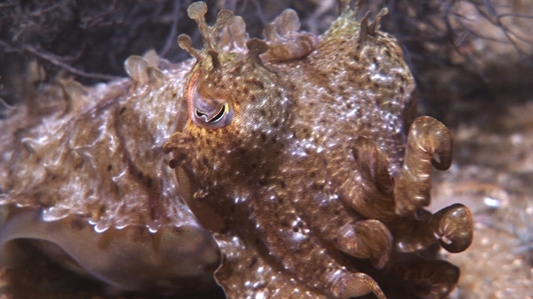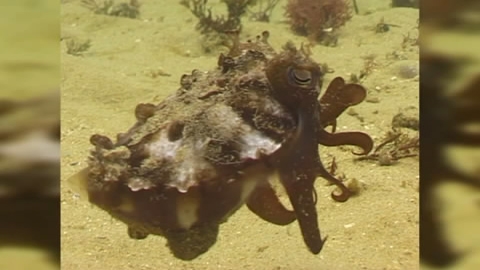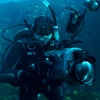Other Names
- Giant Cuttlefish
General Description
Large, robust cuttlefish (world's largest). Recognised by triple flaps of skin above each eye. Cuttlebone of larger animals without spine, instead possessing a wide shelf-like flange around the rear tip. Males possess wide banner-like webs off lower arm pair. Males can attain a total length of 1 m and a mantle length and cuttlebone length to 50 cm. Females generally smaller than males.
Biology
These giant cuttlefish are excellent at camouflage and can push up branched flaps of skin all over their bodies to help them stalk their prey while hiding from predators such as dolphins, seals, sharks and other large fishes. They are generally day active but individuals have been observed feeding at night. Buoyancy is maintained by the gas-filled cuttlebone. Females lay large numbers of large white eggs, with pointed tails, deep in crevices. Eggs take several months to hatch.
Habitat
Rocky reefs, kelp forests and seagrass meadows to a depth of 100 m.
Reefs
Seagrass meadows
Distribution guide
Southern Australia.
Species Group
Octopuses and allies › Cuttlefishes
Depth
Shallow (1-30 m)
Deep ( > 30 m)
Water Column
Max Size
1 m
Diet
Carnivore
Harmful
May bite if harassed or handled. Venom status unknown.
Commercial Species
Yes
Global Dispersal
Native to Australia
Identify
Conservation Status
- DSE Advisory List : Not listed
- EPBC Act 1999 : Not listed
- IUCN Red List : Not listed










